«Face recognition» analytics type. Viewing and editing
On this page:
View case
When viewing an analytics case with the «Face recognition» analytics type, you can choose between table and tile display modes. The tile display mode is set as the default.
In the table mode, additional possible matches for the recognized object are displayed. In the tile mode, only the match with the highest confidence percentage is shown.
Both the tile and table display modes allow you to set the number of items displayed per page (15, 25, 50, and 100).
To switch display modes, click the corresponding button.

Switching display modes
Table display mode
In the table mode, the following columns are displayed:
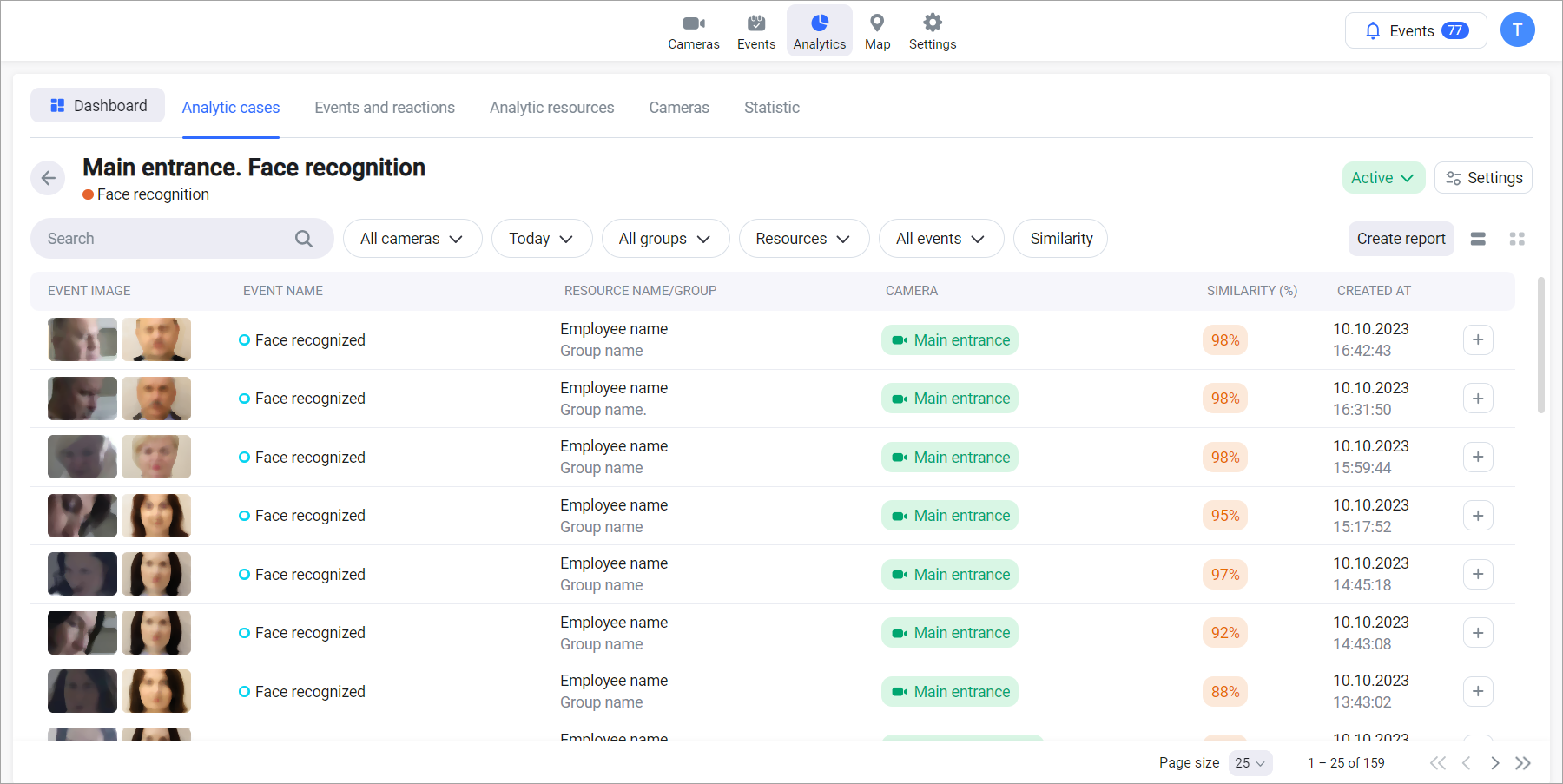
Table display mode
Resource image / camera image. Two images are displayed: the image obtained from the camera and the reference image. Click on either image to enlarge it
Event. Displays one of the following values:
Face recognized
Face unrecognized
Resource / group name. The name of the resource that serves as the reference image and the name of the group in which the resource is located
Camera name. The name of the camera that captured the event. Clicking on the name displays a video player for viewing the archive at the time of the event
Similarity percentage. The percentage of confidence in recognizing the reference and obtained images
Created. The date and time of the event
Button to add the resulting image to the resource group as a reference image
Adding an image as a reference
You can add an image taken from a camera to a resource group as a reference image. To do this, click the add button. As a result, the addition form will be displayed on the screen.
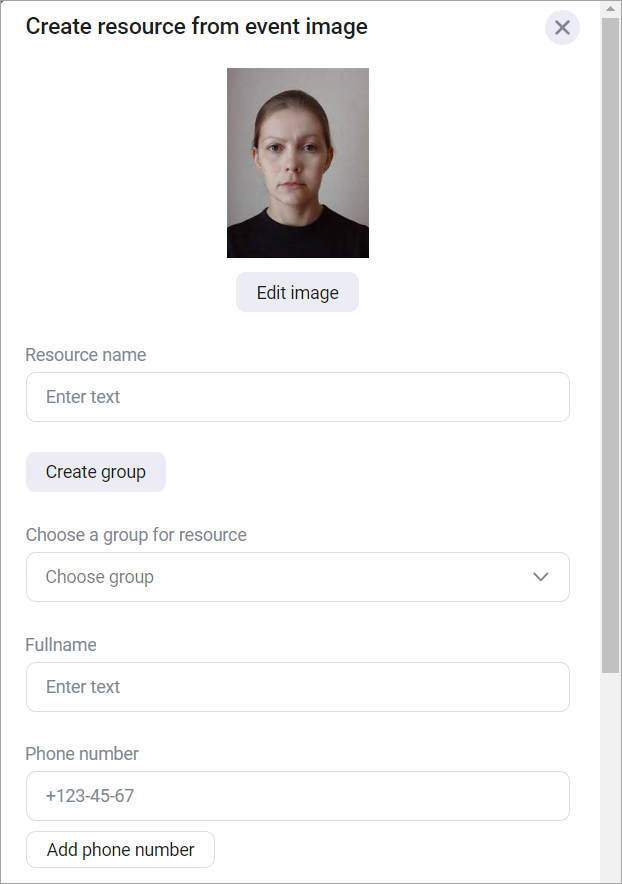
Adding an Image as a Reference
Fill the form. Specify which resource group the image should be placed in. If necessary, you can create a new resource group by clicking the «Create Group» button.
After filling out the form, click «Save».
Tile display mode
In the tile display mode, each event contains the following information:
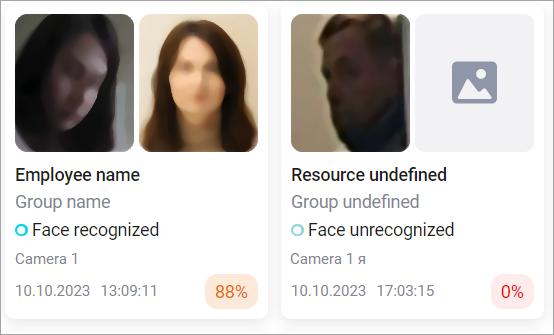
Tile display mode
Two images: the image obtained from the camera and the reference image. Click on either image to enlarge it
The name of the resource that serves as the reference image
The name of the group in which the resource is located
Event name
Camera name: the name of the camera that captured the event. Clicking on the name displays a video player for viewing the archive at the time of the event
Date and time of the event
Similarity percentage in recognizing the reference and obtained images:
0-20% – red
21-99% – orange
100% – green
Filters
A set of filters is available:

Filters
Cameras – only events which were recorded by the selected cameras are displayed
Period – only events that occurred during the specified period are displayed
Groups – displays only events in which the selected resource groups were used for facial recognition
Resources - only displays events in which the selected resources were used for comparison
Events – only certain events are displayed (person identified, person not identified)
Reliability – only events with a percentage of reliability that fall within the specified limit are displayed
To enlarge an image for detailed viewing, click on the image. Both the camera image and the analytics resource image will be displayed.
The «Similarity percentage» filter is used when there are multiple possible matches for the recognized object. You can fill in only one filter field (with a value not exceeding 100%) to set the lower or upper limit for filtering.
By clicking on the camera name in any display mode, you can access the camera archive.
Editing the case
To edit the case, click the «Settings» button on the analytics case viewing page.
To edit a case, select the step and make changes.
You can edit all previously specified settings, except for changing the type of analytics in step 1.
After finishing editing the case, click «Save».
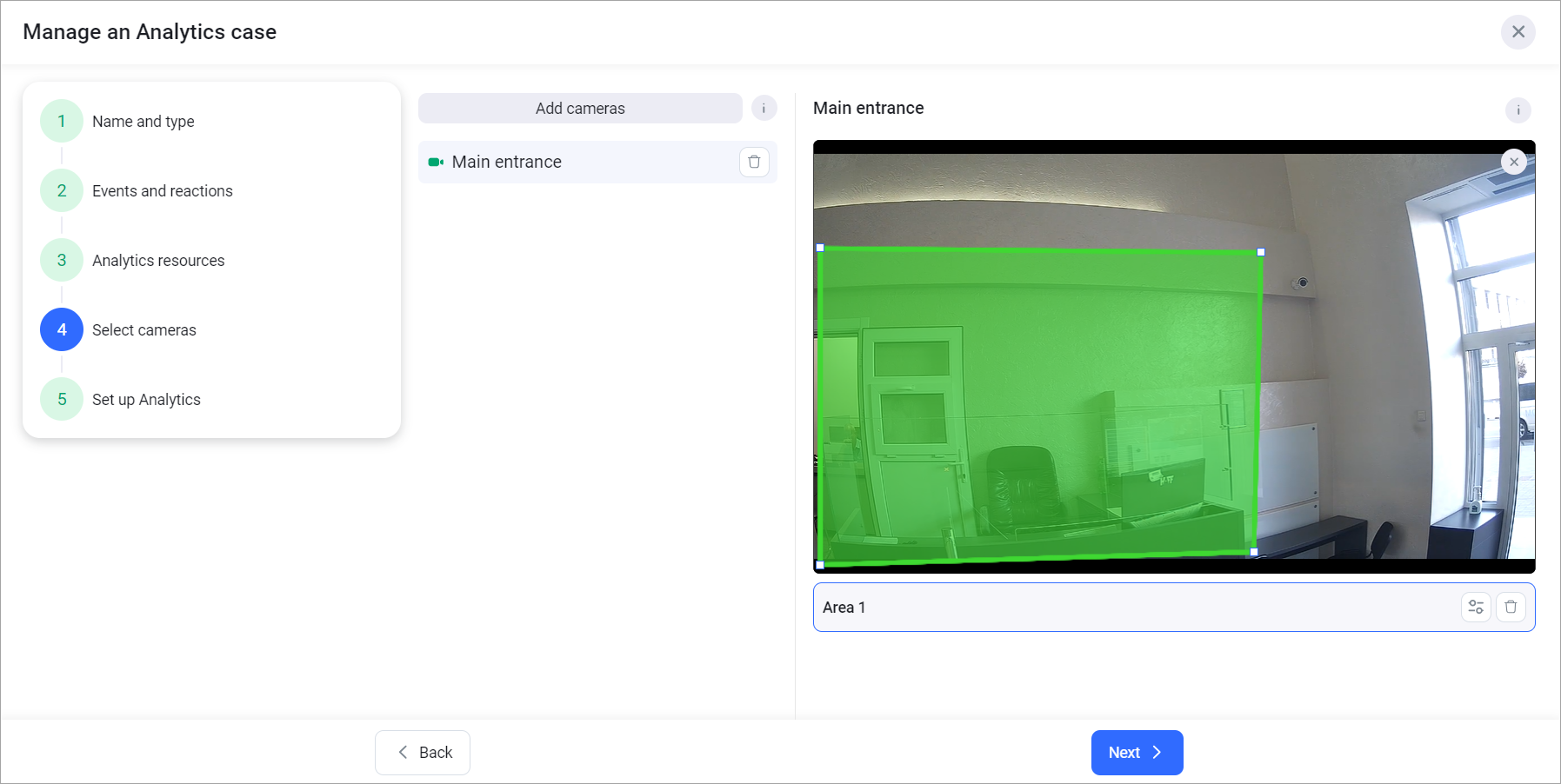
Editing the case with the «Face recognition» analytics type
If, when editing a case, a camera with existing events is deleted, then you must select a method for deleting the camera:
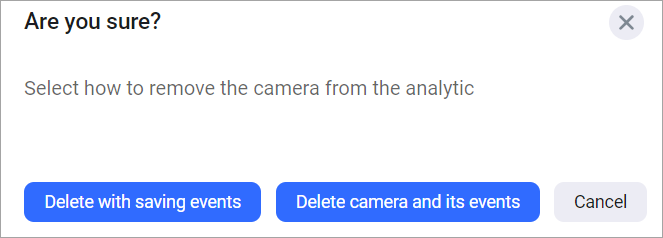
Deleting the camera
Delete camera with saving events
Delete camera and its events
When you select the «Delete with saving events» option, all events that were recorded by this camera will be displayed in the analytics case. In this case, events will be taken into account when generating a report, when viewing the list of events, a transition to viewing the archive at the time of the event will be available, etc.
If you select the «Delete camera and its events» option, all events that were recorded by this camera will be completely deleted.
Generating a report
To generate a report, click «Create report».
As a result, the report setup form will be displayed:
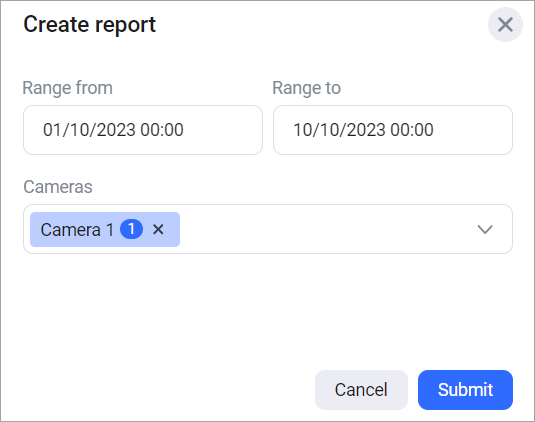
Setting up the report
Specify the period for which the report will be generated.
Specify for which cameras the report will be generated.
Click «Submit».
Once the report is generated, a message with a link to the report will be displayed. Click to download the report in XLXS format.
